Education | Timeline |
- 1829
- 1834
- 1840s
- 1848
- 1853
- 1859
- 1870
- 1870s
- 1871
- 1875
- 1877
- 1879
- 1880s
- 1882
- 1883
- 1884
- 1886
- 1887
- 1889
- 1890s
- 1891
- 1892
- 1893
- 1894
- 1895
- 1898
- 1899
- 1900
- 1900s
- 1901
- 1902
- 1904
- 1905
- 1906
- 1908
- 1909
- 1910
- 1910s
- 1911
- 1912
- 1913
- 1914
- 1915
- 1916
- 1917
- 1918
- 1919
- 1920
- 1920s
- 1921
- 1922
- 1923
- 1924
- 1925
- 1926
- 1927
- 1928
- 1929
- 1930s
- 1930
- 1931
- 1933
- 1934
- 1935
- 1936
- 1937
- 1938
- 1939
- 1940s
- 1940
- 1941
- 1942
- 1943
- 1944
- 1945
- 1946
- 1947
- 1948
- 1949
- 1950s
- 1950
- 1951
- 1952
- 1953
- 1954
- 1955
- 1956
- 1957
- 1958
- 1959
- 1960s
- 1960
- 1961
- 1962
- 1963
- 1964
- 1965
- 1966
- 1967
- 1968
- 1969
- 1970s
- 1970
- 1971
- 1972
- 1973
- 1974
- 1976
- 1979
- 1980
- 1992
Speaker at Hampton Institute
Williams is one of the speakers at the Thirteenth Hampton Builders' Conference Program. This annual conference is co-hosted by Hampton Institute and the National Builder's Association, the national organization for African Americans involved in the construction industry and building trades. Williams leads an open discussion on "national building problems." (The New York Age, February 13, 1937)
I Am a Negro
This essay by Williams is published in the July 1937 issue of The American Magazine. The essay is described by the editor as "the frankest, most human discussion of the color problem we have ever read." This autobiographical essay is edited and reprinted almost 50 years later after Williams dies in Ebony (November 1986).
Going Forward with Southern California
Los Angeles Times, June 27, 1937
Business and Civic Leaders of Los Angeles and Southern California. Among these are many who have assisted in making Los Angeles and Southern California the most progressive section in the world.
Paul Williams' picture is included in photographic gallery with the caption "Architect who has designed over 400 homes in the vicinity of Southern California."
Others in the gallery include: Alex B. Perino (Perino's Restaurant), George Pepperdine (educator, philanthropist), A. M. Beaver (realtor), A. W. Ross (developer Wilshire Boulevard), Brigadier Joseph Sturm (head LA branch Salvation Army).
Golden Gate Bridge, San Francisco
Golden Gate Bridge construction begins January 5, 1933 and opens in May 1937. Spanning the Golden Gate Strait (or Chrysopylae), it connects San Francisco with Marin county. This structure is known as one of the world's most beautiful examples of a suspension bridge. Bethlehem Steel Co. provides the fabricated steel that is transported to California via the Panama Canal. The steel cabling is provided by John Roebling's Sons Company. From the time of construction until 1964, the 4,200-foot bridge has the longest span of any bridge in the world.
Consulting Architect Irving Morrow selects the bridge's distinctive International Orange color. Morrow believes this warm color blends harmoniously with the setting and sets the bridge apart from the cool color of the water and sky. The bridge is an important California landmark, appearing as a backdrop in more than 20 major motion pictures including the Star Trek film series, Alfred Hitchcock films and The Maltese Falcon.
Taliesin West, Scottsdale, Arizona
Frank Lloyd Wright, one of the most famous architects of the 20th century, begins work on Taliesin West. Wright calls this low-profile residential/working complex on 800-acres his "Arizona Camp." The architect imagines the desert site as his family winter retreat and workshop for the Taliesin Fellowship student-apprentices. Beginning in 1937 he stays at the site from November to April. He continues to alter and add to the project until his death in 1959.
Inspired by the "character and beauty of that wonderful site" and impatient with the "meaningless convention" of current aesthetics, Wright's vision is that the buildings should blend with the natural setting. Using indigenous materials—volcanic rock set in wooden forms and bonded with a mixture of cement and desert sand (desert concrete)—his design blurs the distinction between indoor and outdoor space. Architectural historian Paul Heyer describes the complex as a "progressive spatial experience: a series of events in landscape and terracing, with alternation of tight and loose and dark and bright spaces."
Wright's design plan is all encompassing and includes the landscape and interior furnishings. Wright paints the exterior Cherokee red because he believes that red is the "one life-giving color in creation." The rough redwood timbers are decorated with white to mimic the native saguaro cactus. To provide light and a sense of space, canvas is installed on the roof and windows. In 1945 Wright replaces the cloth with more practical glass and plastic.
Noted by historians as one of Wright's later architectural masterpieces, Taliesin West is added to the National Register of Historic Places in 1982.




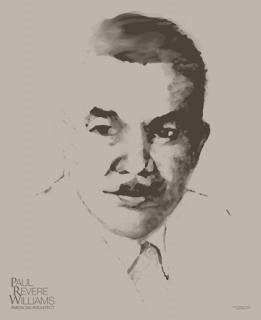
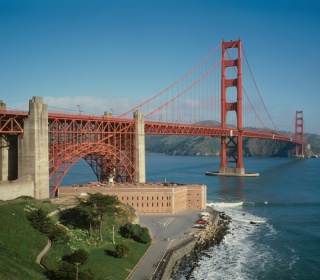
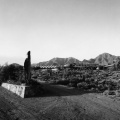
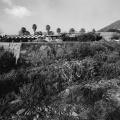
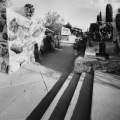
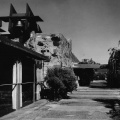
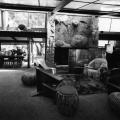


Distinguished Negroes and Their Work: Paul Williams, Architect
Across America Williams' essay I Am A Negro generates discussion in both main stream and the African American press. Valdemar Hill's editorial in the Virgin Islands Daily News on December 1937 is an example of this debate. Hill defends Williams as a "sane, practical Negro who has no illusions regarding the present racial situation ... Although he can easily pass for white, Paul Williams has chosen to to be distinctively Negro. He fully understands that as Paul Williams, the individual, he can go anywhere, do anything without reproach; his limitations are due to the fact that he is a Negro."
The debate about the real meaning of Williams' essay for modern American society continues. His ideas are embraced by both conservative and liberal pundits.